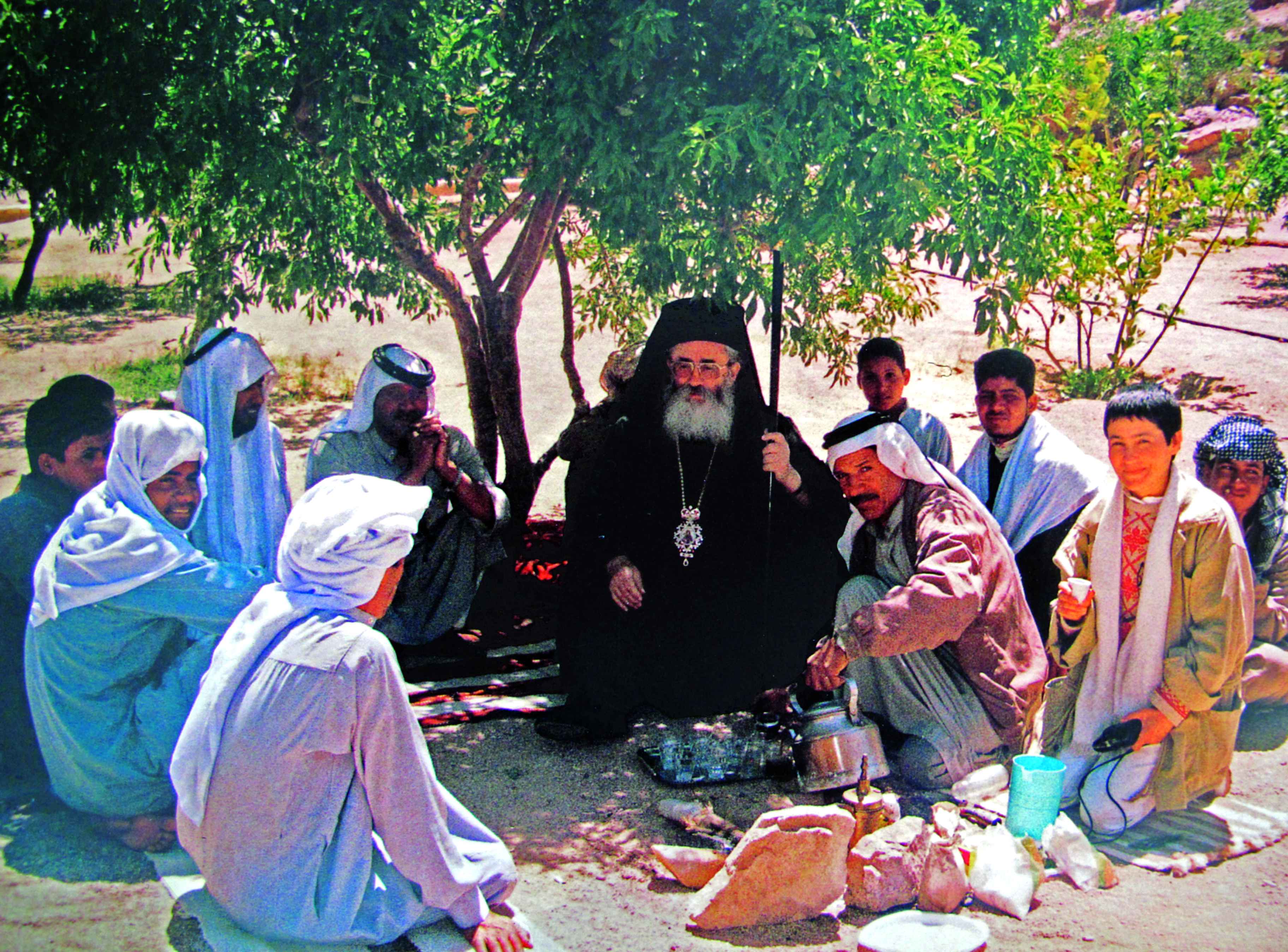THE BEDOUIN AND THE MONASTERY

The term “bedouin” in the Arabic language refers to one who lives out in the open, in the desert. Eutyches, the ninth century Patriarch of Alexandria, writes that when Justinian built the monastery, he settled next to it some two hundred families brought from the Pontos of Anatolia, and from Alexandria, in order to guard, defend, and assist the monks. The modern-day bedouin are considered to be the descendants of those families that were converted to Islam in the seventh century, and that today form the Sinai bedouin families that make up the Jebeliya tribe. Its members to this day trace their lineage to these soldiers, and are proud of their Greek and Roman origins, as well as of this denomination and cultural identity.
The monastery has become an integral part of their lives as they care for it, due to the fact that the monastery has always respected their rights and sought for solutions to their various difficulties. They are peace-loving and cultivated, and they are courteous, joyful, frugal, and hospitable in spite of their poverty. They consider the monastery and the Archbishop of Sinai as the traditional administrative and judiciary authority of their tribe. They are linked with the monastery in that they work for it, taking part in its everyday life and activities. Now, thanks to the great interest shown by the contemporary Egyptian state for them as well as for the whole of the South Sinai, their living conditions have been greatly improved.
Visitors to Sinai are often struck by the kindly and trustful relations that exist between the monks and the bedouin. The Sinai bedouin trace their descent to the soldiers who were commissioned by the Emperor Justinian to construct the monastery, and to remain there as its guardians. They have thus been associated with the monastery from the sixth century. The members of the community are Christians, celibate, and Greek speaking. The bedouin are Moslems, with families, and Arabic speaking. In spite of differences of religion, language, and culture, there exists an amazing reciprocity between the monks and the bedouin, extending beyond simple respect, to mutual support. This is one of the messages of Sinai, that peoples of differing creeds and cultures can still manage to live in harmony.
The proximity of church and mosque within the monastery is a symbol of this rapport. The bedouin have traditionally turned to the monastery for medical help, and mediation of conflicts. In ancient times, bread was distributed to the bedouin. This continues to this day, though now, monks and bedouin make the bread side by side on one day each week, with the greater part being distributed to the bedouin. Thus an ancient tradition continues with more recent alterations. A number of the bedouin are employed by the monastery in various tasks. In 1971, when fire broke out at the monastery, the bedouin rushed to support the monks in extinguishing the fire, yet another example of the support that exists between the monks and the bedouin.




